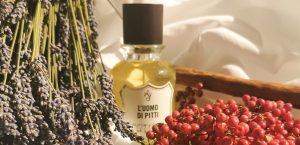BEAUTY AND SKIN CARE TREATMENT FOR DRY AND ROUGH SKIN
Avoid harsh cosmetics: prolonged use of aggressive, poor quality, or alcohol-based cosmetics can deplete the skin’s hydro-lipid film, thereby promoting dryness of the skin. Even frequent washing can negatively affect the skin’s hydration levels. (1)
CLEANSING: This is why it is important to use gentle cleansers like ULTRA-GENTLE CREAM BIODETERGENT first. Its formula, composed of only three ingredients, makes it an extremely gentle product that does not alter the hydro-lipid barrier. In addition, thanks to its creamy texture, only a small amount with little water is enough to deeply cleanse the skin without foaming. These characteristics also make it an excellent makeup remover to use as an alternative to micellar waters, which often tend to dry out the skin.
SERUM: The LA BARRIERA DEL TEMPO facial serum already has an explanatory name: the synergy of Ceramides, Hyaluronic Acid, Coenzyme Q10, and Resveratrol restores integrity to the hydro-lipid layer, thus creating a barrier capable of counteracting the signs of time and skin aging.
CREAM: For the evening, we recommend the IMMUNO 6 facial cream based on Argan Oil, Hyaluronic Acid, Resveratrol, Rhodiola Rosea, Coenzyme Q-10, Pomegranate, and Ginkgo Biloba. The active ingredients, due to their high concentration and synergistic action, fight and reduce the formation of free radicals that cause skin cell aging. In addition, they exert a marked antioxidant action and stimulate cellular renewal and microcirculation, giving dull and opaque skin a new radiance.
In the presence of expression lines in the morning, use VITALITY cream: its formula based on Macadamia Oil, high and low molecular weight Hyaluronic Acid, Acetyltetrapeptide 9, and Carnosine gives the skin a plump and nourished appearance.
And for the body? After showering, do not forget to apply products based on Shea Butter such as SUPERNOURISHING SHEA BUTTER CREAM with Vit. E, olive oil, and Fomblin, excellent for giving the skin a “barrier effect”. Alternatively, VEGETABLE OILS such as ARGAN and ALMOND are also excellent, as they deeply nourish and being “oily” themselves, they reconstitute the lipidic part of the skin. A tip? Apply them to damp skin to promote absorption!
by CHIARA DUILIO
BIOLOGIST

REFERENCES
- https://www.my-personaltrainer.it/bellezza/pelle-secca.html



